Wondering why my water pressure is low? There are several common culprits, such as leaking water pipes, clogged pipes, and valves. This article will walk you through these issues and offer practical solutions to restore your water pressure.
- Key Takeaways
Low water pressure can be caused by issues such as clogged pipes, leaking pipes, partially closed valves, and faulty pressure regulators. - Regular maintenance, including cleaning pipes and inspecting valves, can help prevent issues with low water pressure.
- In cases of persistent low water pressure, it is recommended to contact a professional plumber to diagnose and address underlying plumbing issues. Call free on: 0800 065 4111
Common Causes of Low Water Pressure
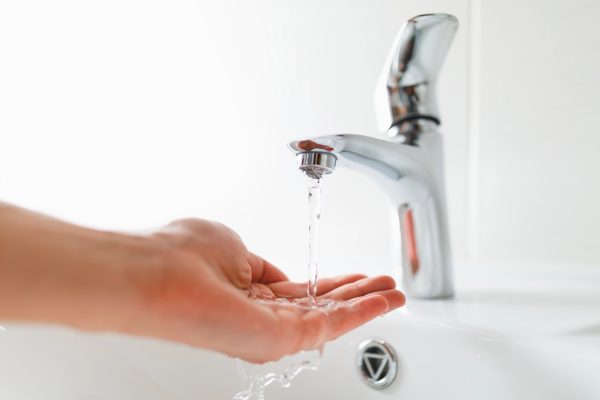 Experiencing low water pressure can be frustrating, but understanding the common causes can help you address the issue more effectively. Several factors can lead to reduced water flow, including:
Experiencing low water pressure can be frustrating, but understanding the common causes can help you address the issue more effectively. Several factors can lead to reduced water flow, including:
- Clogged pipes
- Leaking water pipes
- Partially closed valves
- Faulty pressure regulators
Each of these issues can significantly impact your home’s water pressure, but with the right knowledge and approach, you can fix low water pressure and restore normal flow.
Let’s delve into each of these common causes to gain a better understanding of how they impact your plumbing system.
Clogged Pipes
Clogged pipes are one of the leading culprits causing low water pressure in homes. In older houses, smaller pipes can also contribute to low water pressure by limiting the amount of water that can flow through the plumbing system. Over time, mineral deposits, rust, and limescale can accumulate within the pipes, significantly restricting the flow of water. This buildup can occur in various parts of your plumbing system, from the main supply line to individual fixtures, such as the kitchen sink. Regular checks and maintenance are crucial for identifying and addressing these blockages early on.
If you notice a gradual decrease in water pressure, it’s worth investigating whether clogged pipes might be the issue. Consider the following steps:
- Look for signs of rust or mineral deposits around your taps and fixtures.
- Contact a plumber to perform a thorough cleaning if necessary.
- Replace severely corroded pipes if cleaning is insufficient.
Ensuring your leaking pipes are clear can help prevent leaks and maintain consistent water pressure throughout your house.
Prevention is key when dealing with clogged pipes. Regularly cleaning your faucet aerators and showerheads can help minimise mineral buildup. Additionally, installing water softeners can reduce the amount of limescale and other deposits that accumulate in your pipes. These proactive steps help maintain a healthy plumbing system and prevent issues with low water pressure.
Leaking Water Pipes
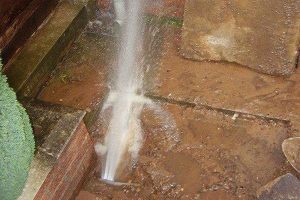 Leaking water pipes can be another significant cause of low water pressure. Even minor leaks can lead to a noticeable reduction in water flow and pressure throughout your home. These leaks often go unnoticed until they cause substantial water loss or damage. Regularly inspecting your plumbing for signs of leaks, like damp spots, mould growth, or unexplained increases in your water bill, can help catch issues early.
Leaking water pipes can be another significant cause of low water pressure. Even minor leaks can lead to a noticeable reduction in water flow and pressure throughout your home. These leaks often go unnoticed until they cause substantial water loss or damage. Regularly inspecting your plumbing for signs of leaks, like damp spots, mould growth, or unexplained increases in your water bill, can help catch issues early.
Promptly addressing leaks prevents further damage and restores normal water pressure. If you suspect a leak, close the main water valve and check your water meter readings to confirm if water is still flowing.
In most cases, fixing leaks will require professional intervention, especially if the leaks are significant or difficult to locate. By resolving leaks quickly, you can maintain optimal water pressure and protect your home from water damage.
Partially Closed Valves
Sometimes, the cause of low water pressure can be as simple as a partially closed valve. Both the main shut-off valve and individual stop valves can restrict water flow if they are not fully open. This restriction can lead to reduced water pressure throughout your entire home. Regular checks of these valves ensure they are fully open and functioning correctly.
If you experience low water pressure, start by inspecting the main shut-off valve, which is typically located near your water meter. Ensure that it is fully open and free of any obstructions. Additionally, check the stop valves under your sinks and behind your toilets to confirm they are not partially closed.
By keeping these water valves fully open, you can ensure optimal water flow and pressure throughout your plumbing system, including the main valve.
Faulty Pressure Regulator
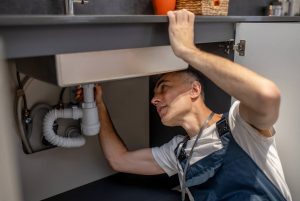 A faulty pressure regulator can also lead to inconsistent water pressure in your home. The pressure regulator is designed to maintain a consistent water pressure level, but if it malfunctions, you may experience fluctuations in water flow. One common indicator of a failing pressure regulator is water pressure that is lower than expected, even when the regulator is set at the correct level.
A faulty pressure regulator can also lead to inconsistent water pressure in your home. The pressure regulator is designed to maintain a consistent water pressure level, but if it malfunctions, you may experience fluctuations in water flow. One common indicator of a failing pressure regulator is water pressure that is lower than expected, even when the regulator is set at the correct level.
Suspecting the pressure regulator? Have it inspected and possibly replaced by a professional. A malfunctioning pressure regulator can not only reduce water pressure but also lead to other plumbing issues if left unaddressed.
A properly functioning water pressure regulator helps maintain consistent water flow and pressure.
Specific Issues Affecting Fixtures
Specific plumbing fixtures in your home can also experience low water pressure due to various issues. Common problems include clogged aerators or cartridges, which can reduce water flow to individual fixtures. Understanding these fixture-specific issues can help you isolate and address the problem more effectively.
Issues with the kitchen tap, especially the cold water tap, are common indicators of fixture-specific water pressure problems. Testing the cold kitchen tap can help diagnose whether the issue is isolated to the kitchen or part of a larger plumbing problem. If the cold water tap in the kitchen is not functioning properly, it may indicate a problem with the cold water supply to the kitchen or an internal plumbing issue that requires further investigation.
One particular issue to consider is designer taps with low flow rates, which we’ll explore in the next subsection.
Designer Taps with Low Flow Rates
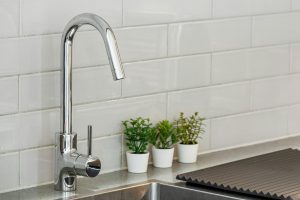 Designer taps are increasingly popular for their aesthetic appeal and functionality, but they often come with lower flow rates to conserve water. While this is beneficial for water conservation, it can result in reduced water pressure, particularly when multiple fixtures are used simultaneously. Homeowners should be aware of this trade-off when selecting designer taps or a stop tap for their bathrooms or kitchens.
Designer taps are increasingly popular for their aesthetic appeal and functionality, but they often come with lower flow rates to conserve water. While this is beneficial for water conservation, it can result in reduced water pressure, particularly when multiple fixtures are used simultaneously. Homeowners should be aware of this trade-off when selecting designer taps or a stop tap for their bathrooms or kitchens.
If you notice low water pressure with designer taps, consider staggering the use of multiple fixtures to maintain adequate water flow. Additionally, check the faucet aerator for any blockages and clean it regularly to ensure optimal performance.
Knowing your fixtures’ design and functionality aids in managing and improving water pressure.
External Factors Influencing Water Pressure
External factors beyond your control can also influence water pressure in your home. Issues such as:
- Municipal water supply problems
- Shared supply pipes
- The time of day can all impact water flow and pressure. The location of your property relative to a water tower or service reservoir can also impact water pressure, especially in areas with varying elevations. Being aware of these external factors can help you identify the root cause of low water pressure and take appropriate action.
Water suppliers are required to meet minimum standards for water pressure and flow, so if you suspect these standards are not being met, you can check with your supplier.
Let’s explore each of these factors in more detail.
Municipal Water Supply Problems
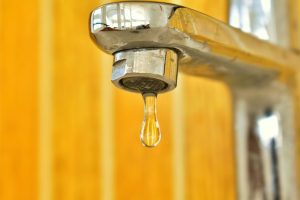 Municipal water supply problems can significantly affect your home’s mains water pressure. Common issues include water main breaks, burst pipes, and ongoing maintenance work by the water company. A burst water main can cause a sudden and significant drop in water pressure or even a complete loss of supply until repairs are made. These problems can lead to a sudden drop in water pressure, impacting all the homes connected to the affected supply line. If you notice a sudden drop in water pressure, it’s essential to contact your water supplier to check for any reported issues in the area.
Municipal water supply problems can significantly affect your home’s mains water pressure. Common issues include water main breaks, burst pipes, and ongoing maintenance work by the water company. A burst water main can cause a sudden and significant drop in water pressure or even a complete loss of supply until repairs are made. These problems can lead to a sudden drop in water pressure, impacting all the homes connected to the affected supply line. If you notice a sudden drop in water pressure, it’s essential to contact your water supplier to check for any reported issues in the area.
In addition to contacting your water supplier, you can also check their website for updates on planned maintenance or known issues that may affect the water supply. Understanding the source of the problem can help you determine whether the issue is temporary or requires further action.
If the problem persists, consider installing a water pressure booster pump to compensate for the lower pressure from the municipal supply.
Shared Supply Pipes
 Shared supply pipes can also lead to reduced water pressure, especially during peak usage times. When multiple households are connected to the same supply pipe, the combined water demand can significantly reduce the pressure available to each home. This is often the case in older properties that share a common supply pipe, which can lead to pressure issues when neighbours are using water simultaneously. This issue is particularly noticeable during times of high water usage, such as early mornings and evenings.
Shared supply pipes can also lead to reduced water pressure, especially during peak usage times. When multiple households are connected to the same supply pipe, the combined water demand can significantly reduce the pressure available to each home. This is often the case in older properties that share a common supply pipe, which can lead to pressure issues when neighbours are using water simultaneously. This issue is particularly noticeable during times of high water usage, such as early mornings and evenings.
To mitigate the impact of shared supply pipes, consider staggering your water usage throughout the day. For example, avoid running multiple appliances simultaneously or schedule heavy water usage activities during off-peak hours.
Additionally, installing a water pressure booster pump can help maintain consistent water pressure even during peak usage times. By managing your water usage and considering the installation of additional equipment, you can mitigate the impact of shared supply pipes on your home’s water pressure.
Time of Day
The time of day can significantly impact water pressure due to varying water demand levels. During peak usage times, such as late mornings and evenings, the high water demand can lead to lower pressure in your home. Conversely pressure is typically higher at night when demand is lower, allowing for better flow.
Understanding these patterns can help you schedule water-intensive activities during periods of higher demand, ensuring the optimal performance of your plumbing fixtures.
Seasonal and Environmental Factors
Seasonal and environmental factors can also significantly impact your home’s water pressure. Extreme cold can lead to frozen pipes, while drought conditions can reduce the overall water supply, both of which can result in low water pressure.
Let’s explore these factors in more detail to understand how they impact your plumbing system and what you can do to mitigate their effects.
Frozen Pipes
Freezing temperatures can cause pipes to freeze, obstructing water flow and resulting in low water pressure. If not addressed promptly, frozen pipes can burst, causing significant water damage and further reducing water pressure. To prevent pipes from freezing, ensure they are adequately insulated and regularly check for any signs of cold water freezing during the winter months.
If you suspect a frozen pipe, it’s essential to act quickly to thaw it out and restore normal water flow. Use a hairdryer or a portable heater to gently warm the affected area with hot water, starting from the faucet and working your way back towards the frozen section.
If you’re unable to thaw the pipe or if it has burst, contact a plumber immediately to prevent further damage and restore normal pressure.
Drought Conditions
Drought conditions can significantly diminish the available water supply, thereby reducing overall water pressure. When there is less water available, the hydraulic pressure in the infrastructure is lower, affecting the pressure experienced in homes and businesses. Droughts often necessitate water restrictions, which can further decrease water pressure in residential and commercial areas.
To cope with reduced pressure during drought conditions, consider implementing water conservation measures in your home. This can include using water-efficient fixtures, promptly fixing leaks, and reducing water usage during peak demand periods. Conserving water and adjusting usage helps maintain adequate water pressure during dry spells.
Solutions to Improve Water Pressure
Low water pressure can be frustrating, but there are several solutions to improve it. Cleaning and replacing pipes, installing a booster pump, and regular maintenance can restore normal water flow and pressure.
Let’s explore these solutions in more detail to understand how they can address common water pressure issues.
Cleaning and Replacing Pipes
Cleaning clogged pipes is a primary solution to restore water flow and pressure in your home. Over time, mineral deposits, rust, and other debris can build up inside the pipes, restricting the flow of water. Regular cleaning removes blockages and improves water pressure.
In some cases, if the pipes are severely corroded or blocked, replacement may be necessary. While replacing pipes can be costly, it is often considered a last resort when cleaning is not sufficient to resolve the issue.
If you suspect that clogged or corroded pipes are causing low water pressure, contact a plumber to assess the situation and recommend the best course of action. By addressing the root cause of the problem, you can ensure consistent water flow and pressure throughout your home.
Installing a Water Pressure Booster Pump
Installing a water pressure booster pump can be an effective solution to increase pressure in your home, primarily if the issue stems from the municipal supply. A booster pump works by increasing the pressure of incoming water, ensuring a more substantial flow across all fixtures. For example, the Grundfos Scala2 3-45 Variable Speed Home Booster is explicitly designed for boosting water pressure in domestic applications, offering energy-efficient operation with its integrated speed control.
It’s recommended to have a professional plumber install the booster pump to ensure proper setup and optimal performance. The pump must be used with a break tank for correct operation, which a plumber can handle efficiently.
For pumps over two years old, consider maintenance or replacement to maintain high water pressure.
Regular Maintenance and Inspections
Regular maintenance and inspections help prevent water pressure issues and ensure the optimal functioning of your plumbing system. By performing routine checks, you can identify and address potential problems before they escalate into significant issues.
Inspect the following for wear or blockages:
- Faucets
- Valves
- Pipes: Ensure pumps and other equipment are in good working order. Regular upkeep not only helps maintain normal water pressure but also extends the lifespan of your plumbing system.
When to Contact a Professional Plumber
While many water pressure issues can be resolved with DIY solutions, there are times when professional intervention is necessary. Persistent low pressure, significant leaks, or complex plumbing problems require the expertise of an experienced plumber to ensure a thorough and effective resolution.
Knowing when to contact a plumber saves time, money, and prevents further plumbing system damage.
Persistent Low Pressure Despite DIY Fixes
Persistent low water pressure despite DIY fixes? It’s time to call a professional. Before doing so, check with your insurance provider to see if plumbing cover is included in your policy.
If your house suddenly has little or no water coming from the taps, it may indicate a supply issue or a major fault in the system.
- Check with your water company for any reported issues.
- Inspect for leaks.
- If little or no water comes out of the tap, turn off the tap.
- Contact your water provider immediately.
Persistent issues often indicate a deeper problem that requires professional diagnosis and repair.
Complex Plumbing Issues
Complex plumbing issues, such as major leaks or faulty pressure regulators, necessitate professional assistance. If you suspect an internal plumbing problem, a broken water valve, or other significant problems, contacting a plumber is crucial to ensure accurate diagnosis and practical solutions.
Professional plumbers have the expertise and tools to handle intricate plumbing work, ensuring efficient operation and optimal water pressure.
 Get in touch
Get in touch
If you’re facing water pressure issues and need professional assistance, don’t hesitate to get in touch with Pipeline Services. With over 25 years of experience, Pipeline Services offers a wide range of services, including leak detection, pipe replacement, water pipe services, reservoir maintenance, and emergency repairs.
Contact us at 0808 164 0588 or email us at sales@pipelineservices.co.uk. Our dedicated team is here to help you restore your home’s water pressure and ensure your plumbing system operates smoothly.
Frequently Asked Questions
What causes low water pressure in my home?
Low water pressure in your home is often caused by clogged pipes, leaking fixtures, partially closed valves, or malfunctioning pressure regulators. Identifying and addressing these issues can help restore proper water flow.
How can I fix low water pressure caused by clogged pipes?
To fix low water pressure caused by clogged pipes, clean the affected pipes or replace any severely corroded sections to restore normal water flow. This approach will effectively address the issue and improve your water pressure.
When should I contact a professional plumber for issues with low water pressure?
You should contact a professional plumber for low water pressure issues if DIY fixes fail or if you encounter significant leaks or complex plumbing problems. Their expertise will ensure the issue is addressed correctly.
Can installing a water pressure booster pump help with low water pressure?
Installing a water pressure booster pump can effectively resolve low-pressure issues, particularly when caused by inadequate mains pressure. This solution ensures a consistent and improved water flow throughout your home.
How can I prevent low water pressure in the future?
To prevent low water pressure in the future, ensure regular maintenance by cleaning faucet aerators and verifying that all valves are fully open. Taking these steps will help maintain optimal water flow in your home.

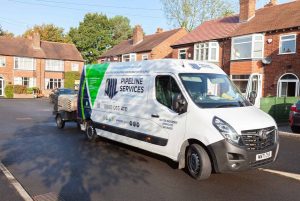 Get in touch
Get in touch

